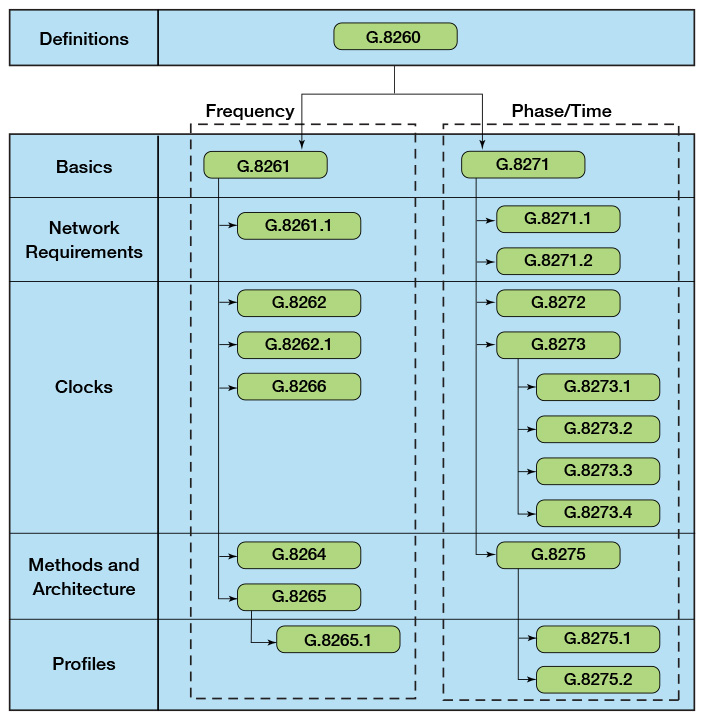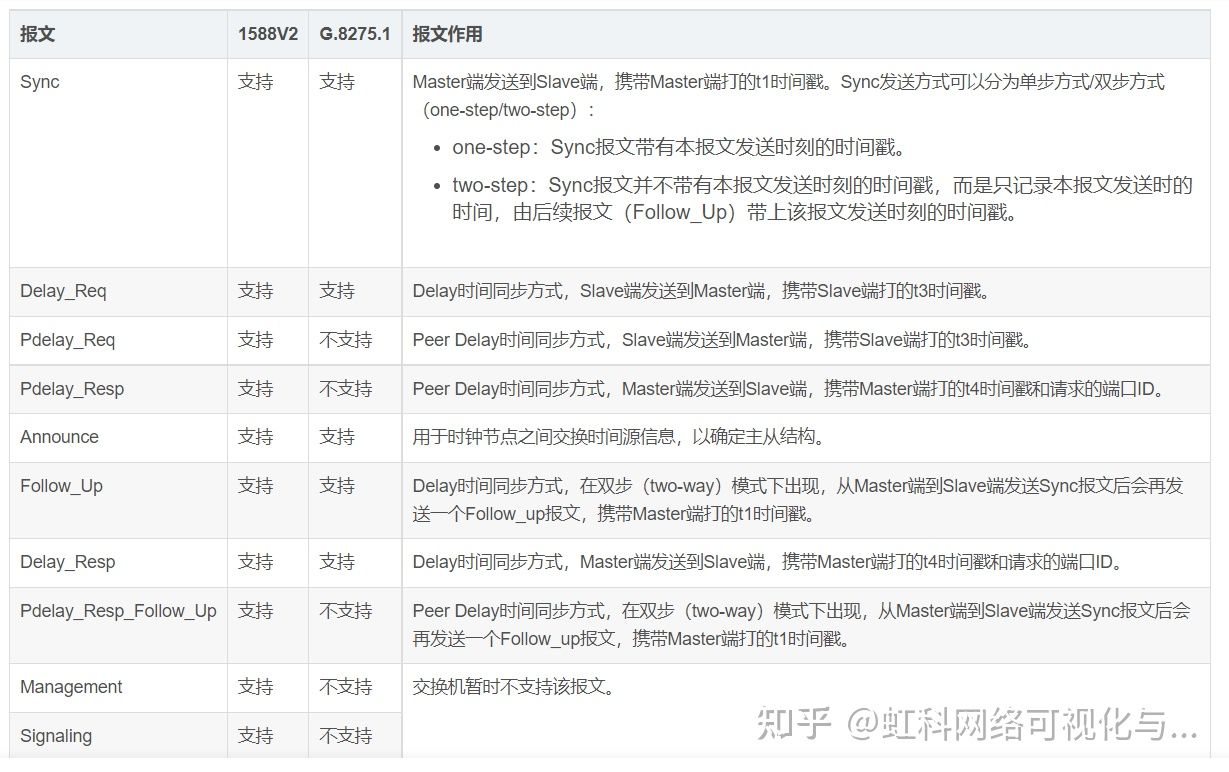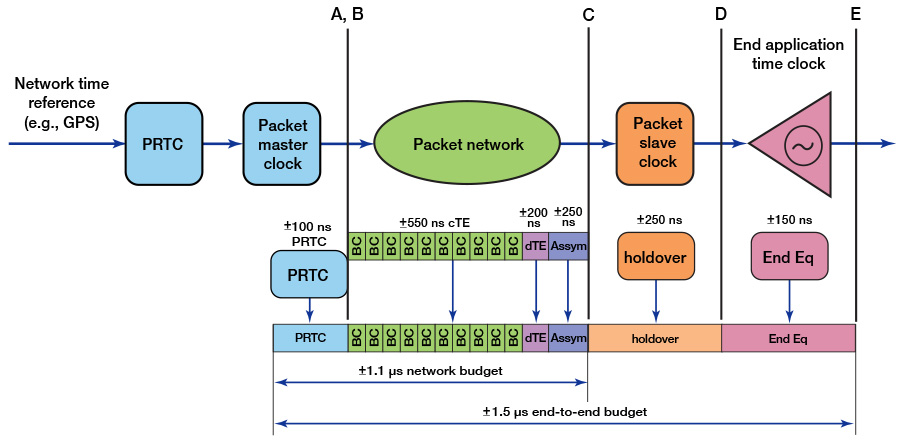| IEEE1588v2解析(6)PTP协议和ITU规范关系 | 您所在的位置:网站首页 › 8260 8265区别 › IEEE1588v2解析(6)PTP协议和ITU规范关系 |
IEEE1588v2解析(6)PTP协议和ITU规范关系
|
下面图片展示了 ITU-T SG15/Q13 (Telecommunication Standardization Sector of the International Telecommunications Union)关于频率和时间同步的规范: 这些规范分为两部分: Solution for frequency synchronization 频率同步Solution for time or phase synchronization 时间同步G.8260 model (for timing and synchronization in packet networks) 包括了以上两个部分:
G.8275.1支持的时钟节点为: T-GM(Telecom Grandmaster,电信级主时钟):只能为主时钟,可以有一个或者多个PTP端口,但不能跟踪其他的PTP时钟源。T-BC(Telecom Boundary Clock,电信级边界时钟):边界时钟,可以为主时钟,也可以跟踪其他的PTP时钟。T-TSC(Telecom Time Slave Clock,电信级从时钟):只能为从时钟,不能作为主时钟。设备上运行了PTP协议的端口称为PTP端口,PTP端口的按角色可分为以下三种。 主端口(Master Port):发布同步时间的端口,可存在于T-BC、BC或OC上。从端口(Slave Port):接收同步时间的端口,可存在于T-BC、BC或OC上。被动端口(Passive Port):不接收同步时间,也不对外发布同步时间,闲置备用的端口,只存在于T-BC或BC上。
G.8275.1协议定义的报文封装方式为二层组播(不带tag),对应的以太网类型Ethernet Type为0x88F7,组播目的MAC有两种:不可转发组播MAC(0180-C200-000E)和可转发组播MAC(011B-1900-0000)。
不带Tag的二层组播封装报文 ITU-T G.8271定义的网络参考模型:
Primary Reference Time Clock output(A)Packet Master Clock output(B)Packet Client Clock input(C)Packet Client Clock output(D)End Application output(E) End-to-end time error network budget for an LTE-TDD application:
|
【本文地址】
公司简介
联系我们




